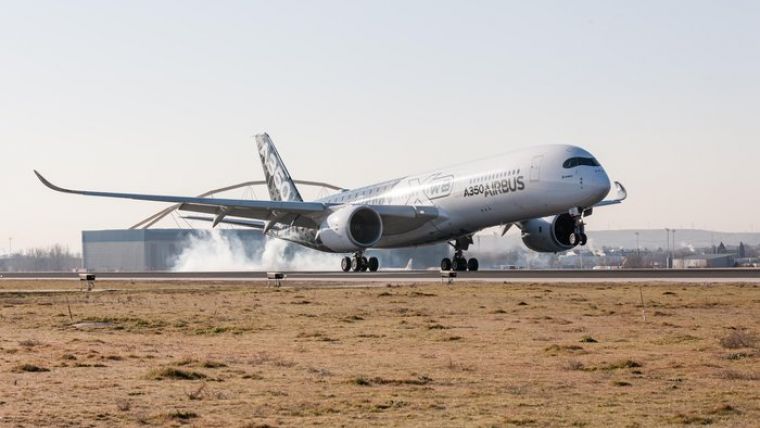New Airbus A350 Airliner EGNOS-capable
The ESA-developed EGNOS system for sharpening the accuracy of satellite navigation across Europe has been adopted by a growing number of airports to enable satellite-guided landing approaches. The new Airbus A350 airliner, currently entering service, comes fitted with EGNOS as standard. For the first time on the A350 the aircraft manufacturer has installed a new so-called Satellite Landing System, according to Jean-Francois Bousquie, an Airbus flight test engineer focused on avionics.
This allows pilots to perform precision landing approaches guided by EGNOS or its US equivalent WAAS, offering vertical guidance down to a minimum of 60m before the pilot sights the ground to make the go/no-go decision on the final landing descent, Bousquie says.
The European Geostationary Navigation Overlay System, or EGNOS, can provide horizontal and vertical guidance to anywhere in Europe, without the need for any additional airport-hosted infrastructure. By using three geostationary satellites and a 40-strong network of ground stations, EGNOS improves the accuracy of US GPS signals over European territory, while also providing continuous updates on their ‘integrity’, or continuing reliability.
ICAO Standard
The result is that the EGNOS-augmented signals are guaranteed to meet the extremely high performance standards set out by the International Civil Aviation Organisation (ICAO) standard, adapted for Europe by Eurocontrol, the European Organisation for the Safety of Air Navigation. The signals from space can therefore be relied on routinely for the safety-critical task of vertically guiding aircraft during landing approaches.
A total of 131 airports in Europe offer some 225 EGNOS-based approach procedures. By 2020, 582 landing procedures are expected across 20 European countries. The largest international airports use Instrument Landing System (ILS) infrastructure, with radio beams offering a truly precision landing capability, including the ability to ‘autoland’ when visibility is at its worst. But ILS is expensive to install and maintain, so smaller regional airports often forego it. The same is true of many new or expanding airports.
Busiest runways
Even with larger airports, in many cases only their busiest runways are equipped with ILS. So EGNOS offers a cost-effective way of safely increasing use of remaining runways, boosting the flexibility of any given airport.
By reducing the value of the ‘minima’ – the lowest safely guided altitude – for non-ILS runways, EGNOS increases the efficiency and safety of aircraft landings, Mr Bousquie added. The take-up of EGNOS by European airports remains relatively low for now, but this should change over time. And with the A350 they are really designing for the long term – each aircraft will have a working life of 25 to 30 years.
Every qualified commercial airline pilot has been trained on ILS, to follow its radio beam. So the Satellite Landing System works by having them follow the same type of cues as much as possible on a ILS ‘lookalike’ basis, employing all available navigation data including EGNOS.
A pair of onboard Multi Mode Receivers manage the A350’s radio sensors, compute the deviations and ensure interface with display and guidance systems.

Value staying current with geomatics?
Stay on the map with our expertly curated newsletters.
We provide educational insights, industry updates, and inspiring stories to help you learn, grow, and reach your full potential in your field. Don't miss out - subscribe today and ensure you're always informed, educated, and inspired.
Choose your newsletter(s)
























